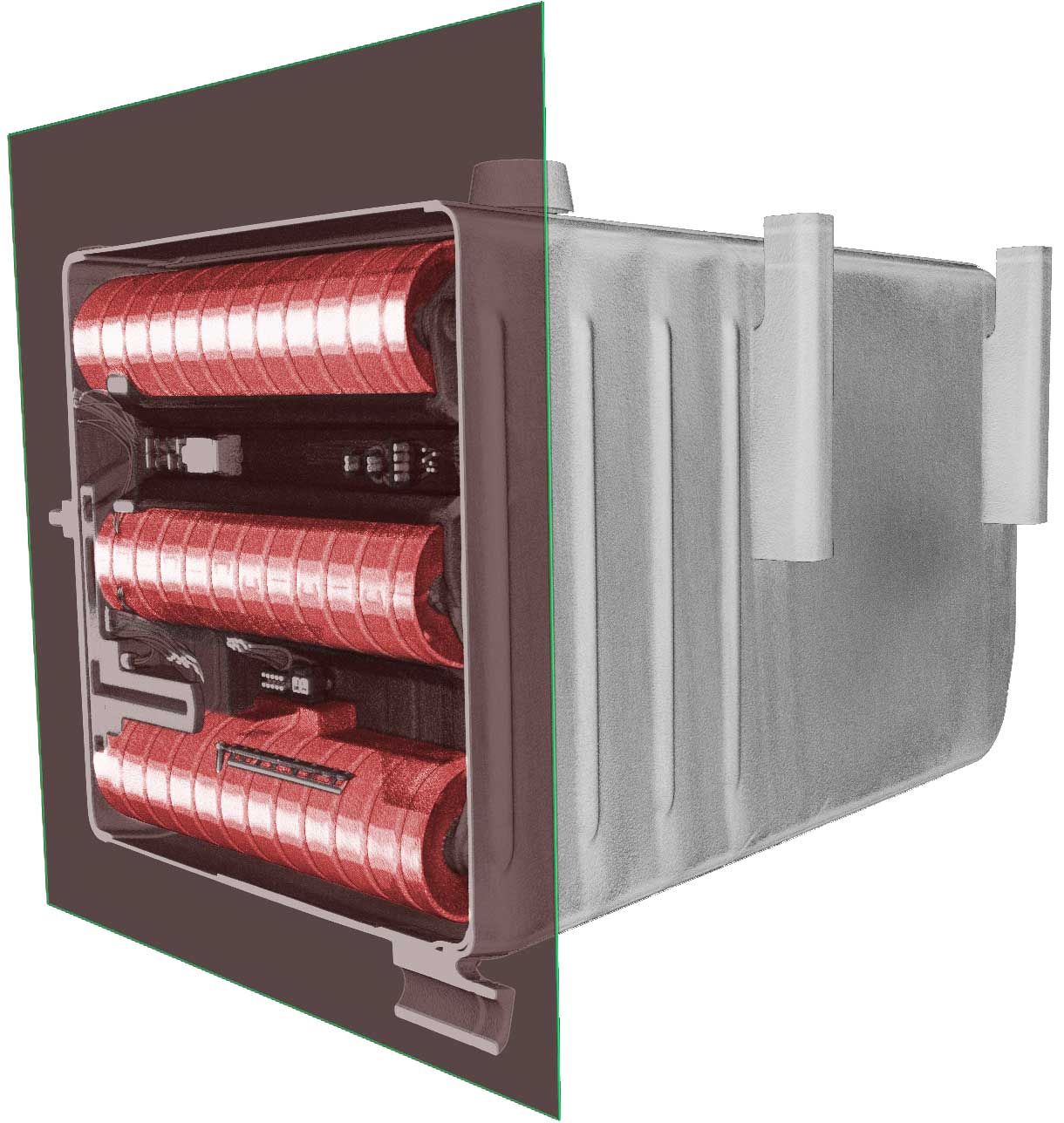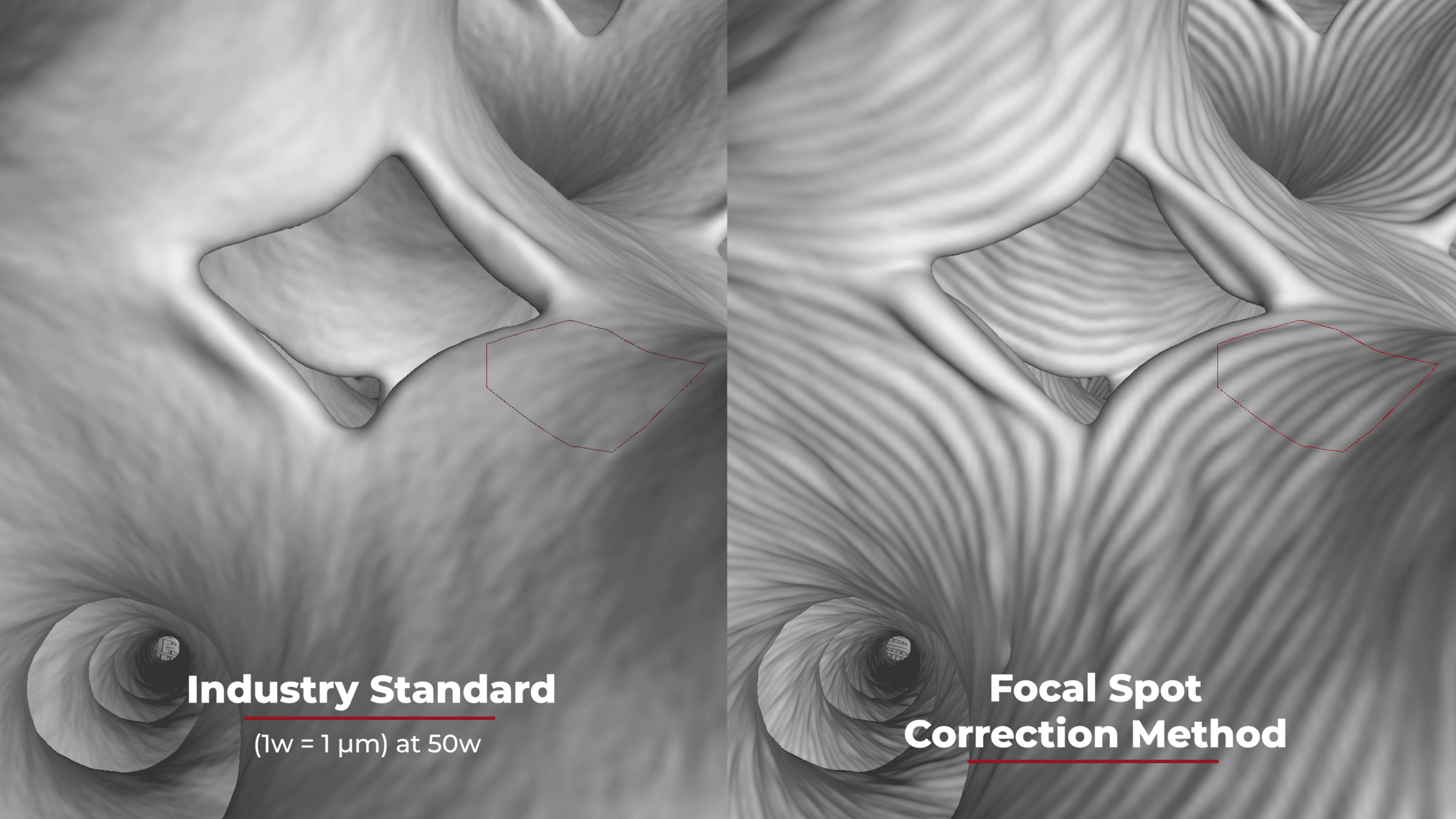How many projections do I need for my CT Scan?
When determining the number of projections you need for your CT scan you must first know some information about the sample that you are scanning. Samples with complex geometry will require more projections than samples with simple geometry. The reason for this is that if the sample has a flat surface we must get a projection during the CT scan that lines up with that flat surface in order for us to get a reconstruction that shows that surface as flat. If you do not get a projection that shows the flat surface in the scan, you will see that surface as bowed or curved slightly in the reconstruction. If the sample that you are scanning is a cylinder you can run the scan with a lower number of projections and the reconstruction will still look like a cylinder. If the sample is a cube you will need to run a higher number of projections in order to get a reconstruction with flat sides.
Another thing that must be considered when deciding on the number of projections to acquire for your CT scan is the kind of information that you are trying to get out of the scan. If you are trying to verify larger components in an assembly you generally will not need to run as many projections, as you will be able to see these larger features easily and you probably do not need to clearly see all the flat surfaces to verify that the components are present. When looking for porosity or other defects in a sample you may need to run a slightly higher number of projections simply to increase the likelihood of getting a few projections with the highest possible contrast view of the defect (images of the defect through the least amount of material). This will help substantially with defect detectability in the reconstruction by showing clear, high contrast defects. If you are looking for small cracks in your sample you should use an even higher number of projections. This is due to the fact that to get the best results for crack detection we need to have at least one projection that aligns with the axis of the crack, resulting in an image with the highest possible contrast view of the crack. Assuming that the width of the crack will be represented by at least 1 pixel, the theoretical optimum number of projections will be the number of pixels the area of interest covers as it rotates 360 degrees multiplied 1.5. This should result in each projection in the scan having roughly a 1 pixel change in angular position. For samples that do not allow for enough magnification to have the width of the crack represented by 1 pixel, it may be helpful to run an even higher number of projections.
When deciding on the number of projections to use in your CT scan it is very important to know if you plan on running a continuous scan or a step scan. When running a step scan it is not necessary to adjust the number of projections based solely on the scan type, as the system stops all motion before acquiring any images. When running a continuous scan it becomes very important to consider the number of projections as the system will acquire all the images while the system is in motion. This can cause a substantial amount of blur if you do not use enough projections. Again, the theoretical optimum number of projections will be the number of pixels your area of interest covers as the sample rotates 360 degrees multiplied by 1.5. This will reduce the blur caused by the motion to be reduced to one pixel in the image, resulting in a crisp reconstruction. This may not be necessary if what you are looking for in the scan is larger than one pixel. If you know the size of the feature you are looking for in the scan you can calculate how many projections you will need to get a scan that is not too blurry to detect the features. If you take the circumference of the area of interest and divide that by the number of projections you are planning on using in your scan you will get the distance that the sample will be moving during each acquisition. Keeping this distance smaller than the size of the features you are looking to detect will help with reducing motion blur while keeping the number of projections as low as possible.
When selecting the number of projections for your scan time will inevitably be a factor. Running a scan with a large number of projections not only increases the acquisition time, but it increases the reconstruction time as well due to there being more data for the system to process to generate the reconstruction. Typically it is desirable to run the lowest number of projections required to achieve the goals of the CT scan so you can deliver data faster, reduce data management, and ultimately increase productivity. Finding the correct balance between time and quality is important so that you can keep scan times as low as possible while still achieving the goals of the CT scan.
Proper selection of the number of projections is based on combination of sample shape, inspection goals, and scan type, and time. Looking at all four of these factors will help you pick the optimum number of projections for your scan. Having the optimum number of projections for your scan can help reduce scan times, increase the likelihood of the scan successfully showing the features that you are looking for, and reduce rework from having to rescan samples due to not achieving the goals of the scan. Once you have selected the optimum number of projections you can be confident that you have a well thought out, efficient scan.


